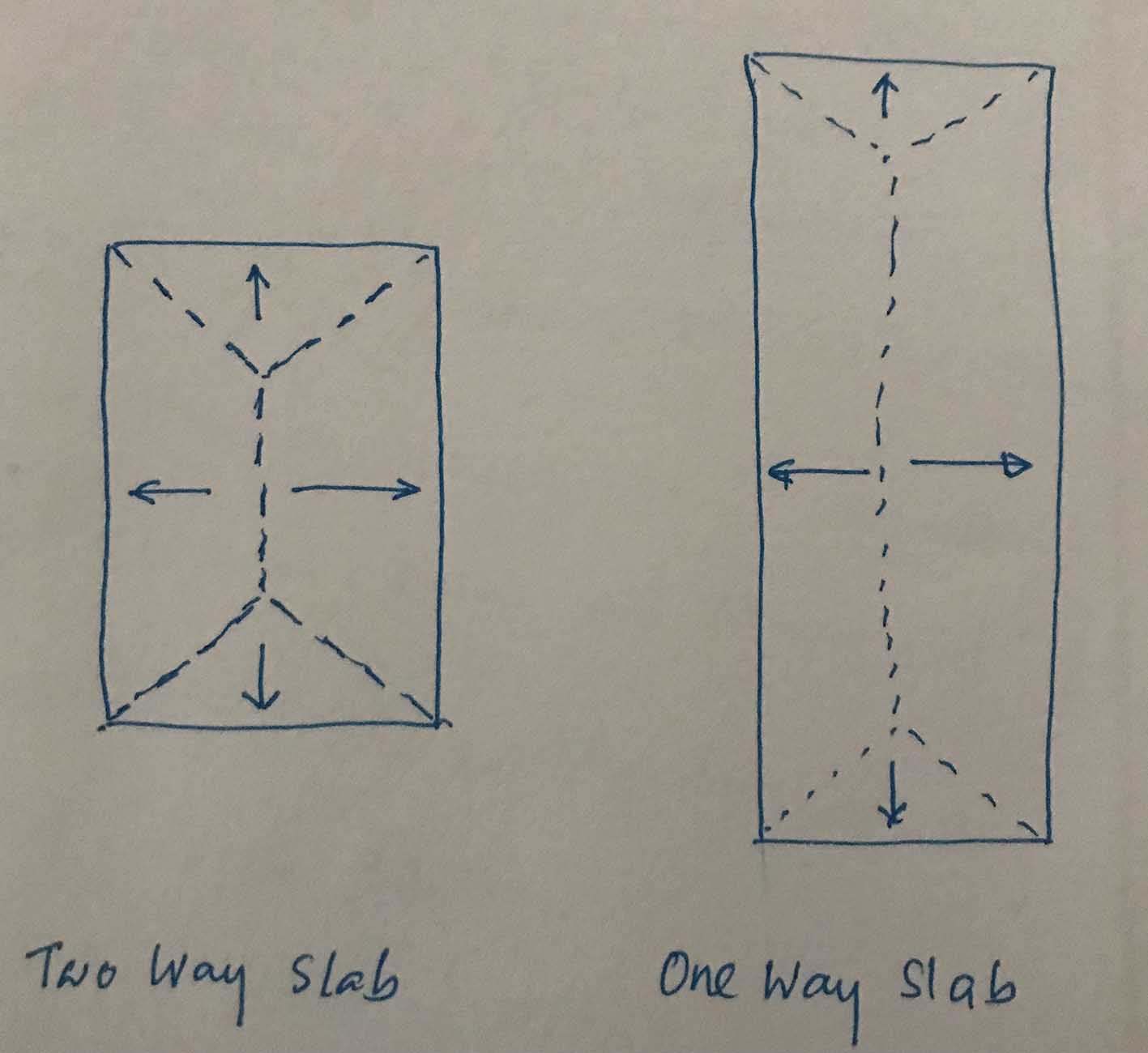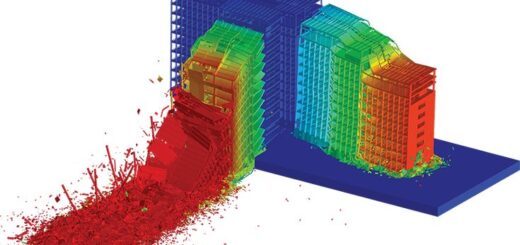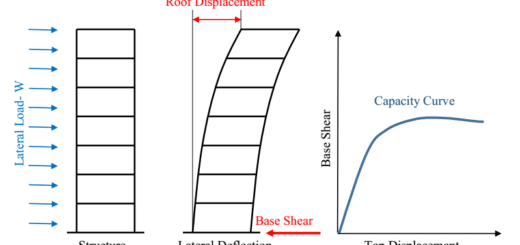Difference between One Way Slab and Two Way Slab
The difference between one way slab and two way slab is required to understand in slab design. There are things to be discussed in detail in two types of slab based on the slab load transfer mechanism to its supports namely beams, walls, etc.
Types of Slabs
Mainly there are about five types of slabs.
- One way slabs
- Two way slabs
- Flat slabs
- Waffle slabs
- Precast slabs
- post-tension slabs
We are discussing only the one way and two way slabs in this article.
Let’s understand what is one-way slab and two way slab.
According to the BS 8110, the definition of the one-way and two-way slab is as follows.
Two way slab = Long Span / Short Span ≤ 2
One way slab = Long Span / Long Span > 2
This is mainly required to evaluate the distribution of loads applied to the slab. Most of the manual load calculation methods are based on the yield line method.
Load Distribution can be used to understand the difference between one-way slabs and two-way slabs. The following figure indicates the typical pattern of load distribution.
The increase in the middle line (sagging yield line) is observed in the two-way slabs. Lesser the middle line equals the load distribution to each side. In one ways slabs, the load transferred is very high to the longitudinal beams and minimal for transverse beams.
The reinforcement design of the one-way slabs and two ways slabs are not the same. There are different methods to analyze and design the one-way slabs. According to the BS 8110, there are tables to find the bending moment coefficients and shear force coefficients which are used to calculate the bending and shear forces.
If we know the load, we can calculate the sagging and hogging bending moment based on the boundary conditions and span ratio (long span / short span). Further, there are tables to calculate the bending and shear forces of one-way slabs too.
The simple analysis method can also be used to find the bending moment and shear forces. When there are a series of one-way panels and there are uniformly distributed loads applied to the slab, it can be analyzed like a continuous beam. The width of the beam could be considered as 1000mm.
Reinforcement Detailing
The following could be considered.
Reinforcement Detailing of the One Ways Slabs
- Generally, the main reinforcements are provided in the direction of load distribution. Thus, the main reinforcements shall be placed in the shorter direction as much as possible except where it is impossible to place due to the connection with the majority of other panels spanning opposite directions.
- Normally, shear links are not provided for slabs. However, when there are higher thicknesses and concentrated loads, shear reinforcement requirements shall be checked.
- An increase in the slab thickness causes thermal issues. If slab thickness increases beyond 200mm, crack control reinforcement or reinforcement requirements shall be checked.
Reinforcement Detailing of Two Way Slabs
- A similar method discussed under the one-way slab could be followed.
- The curtailment reequipment at continuous supports and end supports could be done following design standards.
The article Slab Design to BS 8110 could be referred for further information on slab design.




